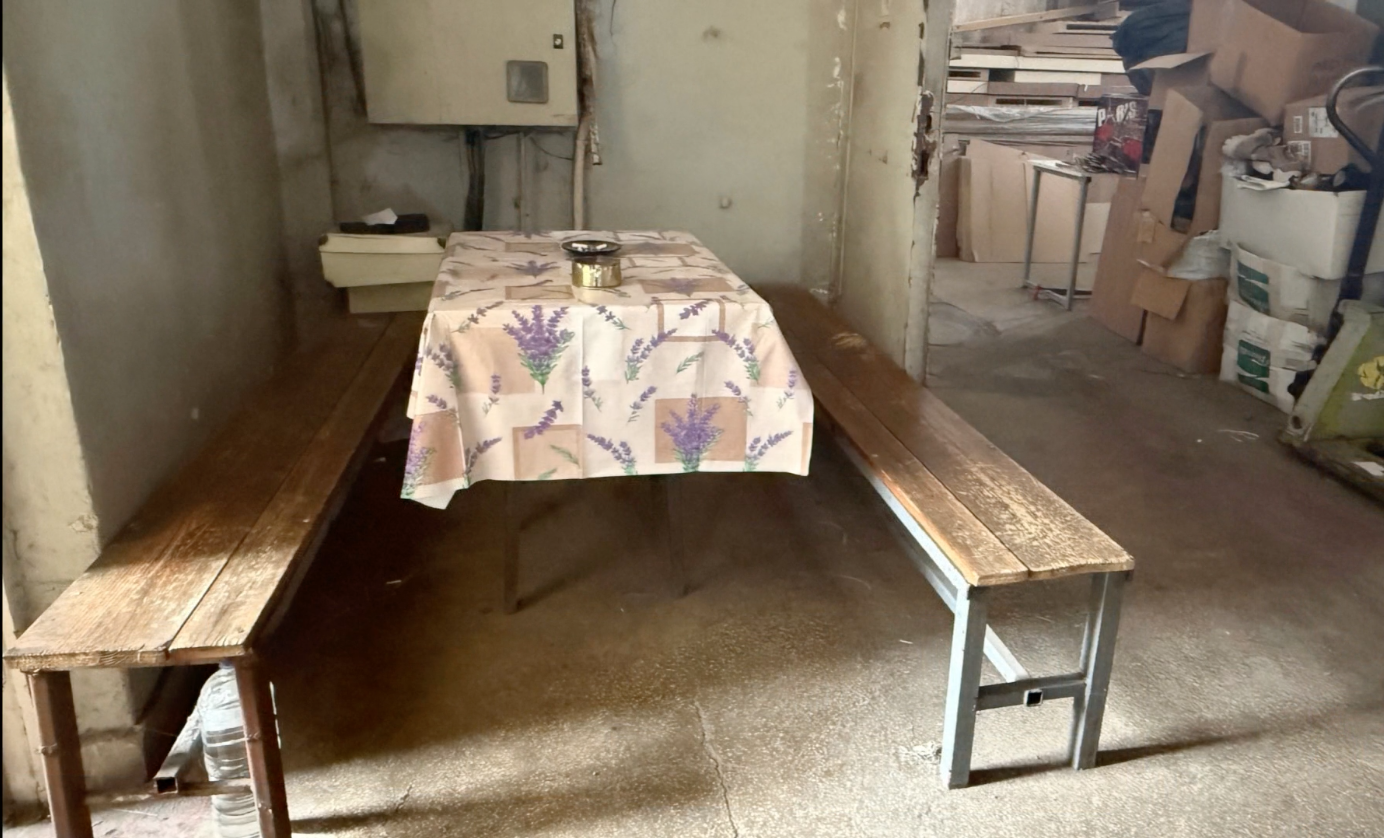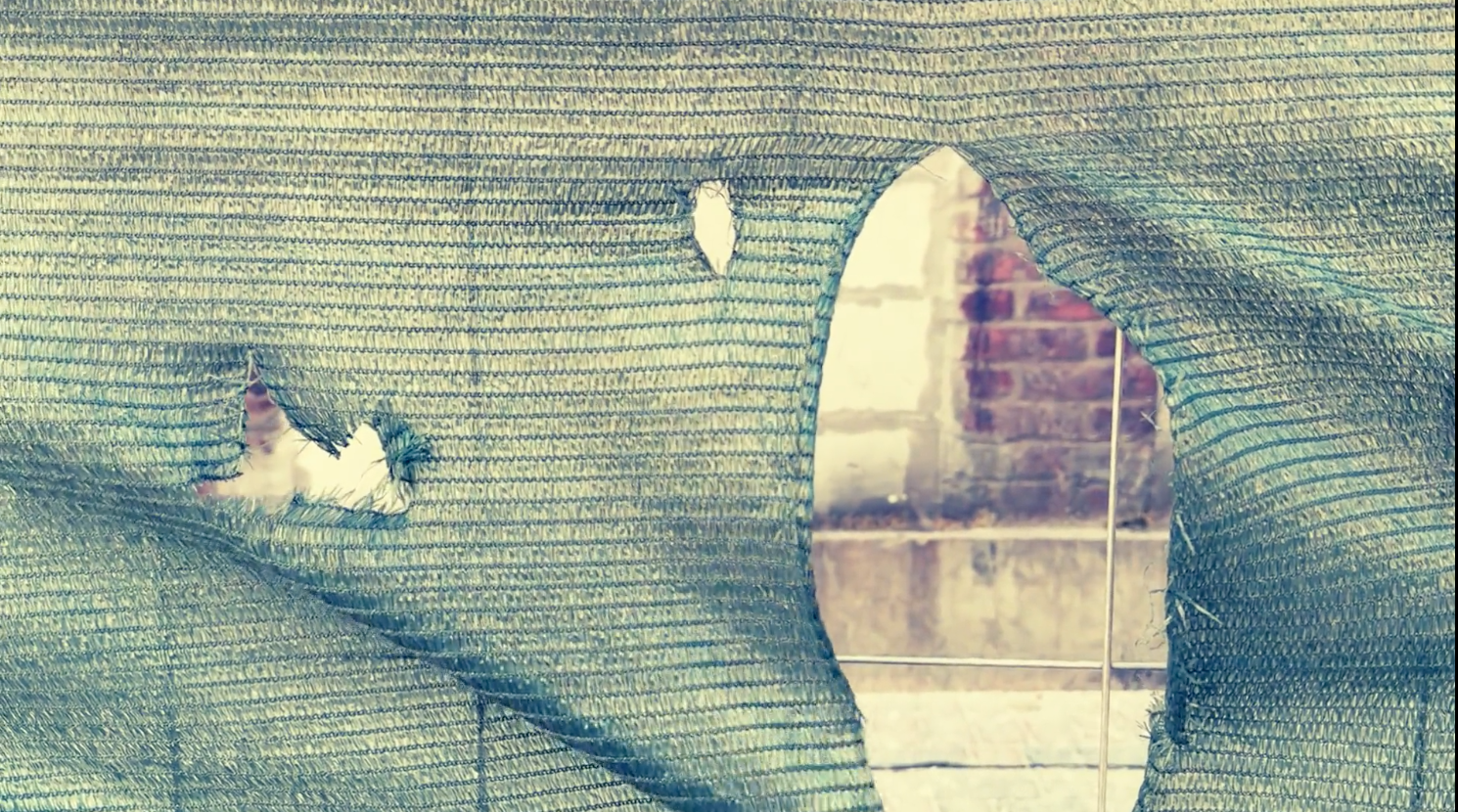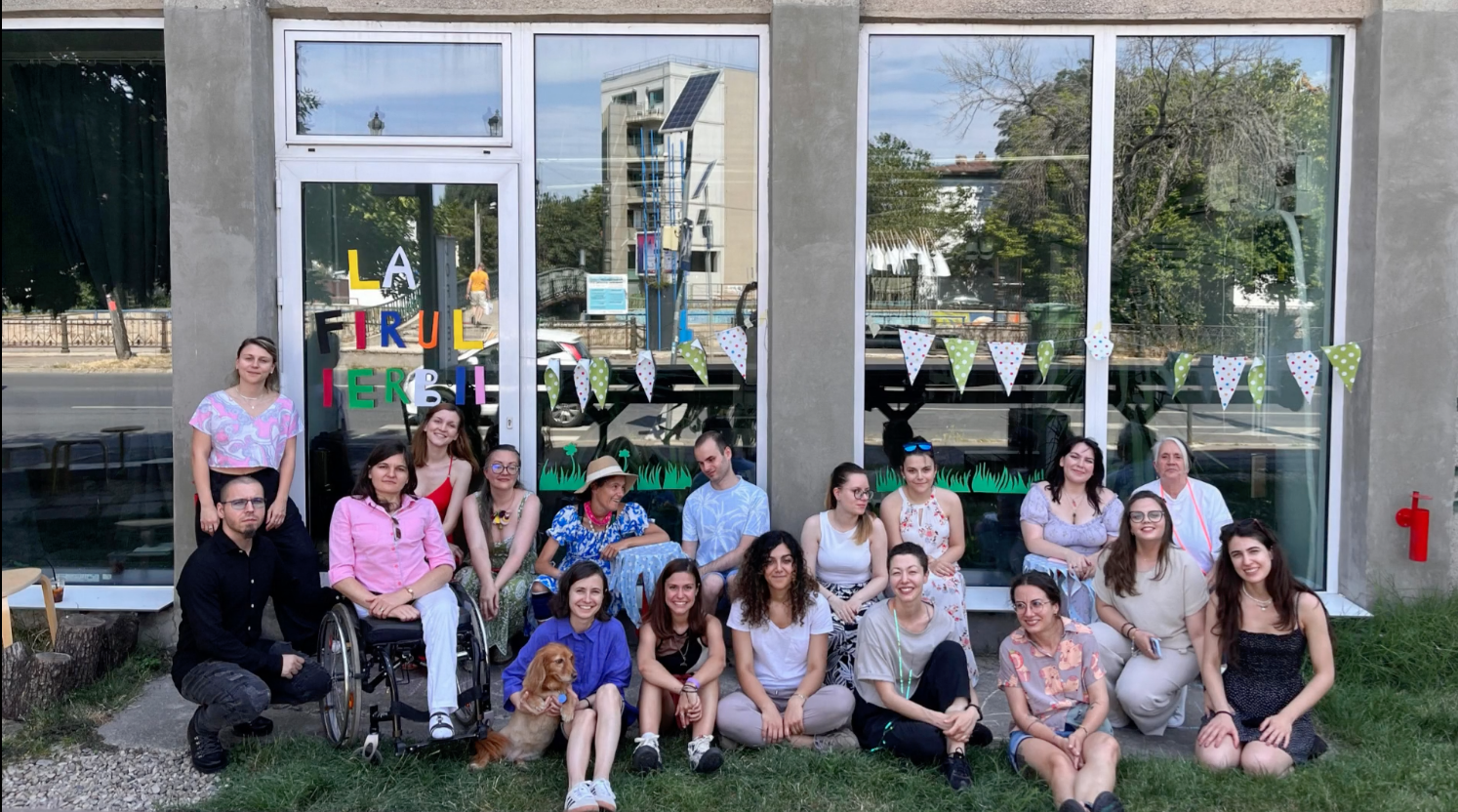CHEF [KEF]
Video Essay MP4. 13 minutes 30 sec. Artist’s residency funded by the British Council in Bucharest, Romania, as part of a programme entitled Reclaiming Post-Industrial Futures: a multi-residency programme exploring forgotten industrial heritage sites as places for collaboration and community bulding. Developed by EUNIC, Romania.
A personal analysis of post-industrial futures in contemporary Bucharest through a combination of audio, video, photography, text and music, that interweaves several themes which may initially seem quite disparate. There is a story about tablecloths, both vinyl and paper, offered as a humble ‘low art’ medium. These everyday materials become a method for expressing collaboration and community and to provide opportunities for decoration and celebration. There is a meditation on the role of art in society, explored through the juxtaposition of Malevich’s 1915 abstract painting Red Square with simple patterned shapes cut from local market-bought vinyl tablecloths. Here the artist argues that the early 20th century vision - where art would mirror a new, purer and utopian society - has collapsed into itself; and suggests that more messy, everyday art forms better capture the world we live in. This narrative is interlinked with the residency’s process, where art was co-created from tablecloths in collaboration with community participants. This, in turn, is connected to the Romanian concept of ‘chef’ (pronounced ‘kef’ in English) - a way of being that infuses both individual and communal activities with energy and enjoyment.
A final thread is the exploration of some old industrial heritage sites in the local Timpuri Noi district; both as sometimes beautiful abstract shapes and compositions, but also most importantly as places for everyday employment, culture and community, which are under threat from redevelopment, raising important questions about their future. Here the plastic tablecloths take on a different role - as colourful ‘patches’ applied to parts of the old industrial buildings, expressing a desire to ‘patch up’ the old rather than knock it down. Overall, the video essay provokes reflection on vital questions: Who are cities for? How can we imagine futures that prioritise small-scale adaptation, care, and repair—especially concerning Bucharest’s industrial heritage? Through these intertwined narratives, the work encourages a reconsideration of how we value and revitalise the places that shape our communal lives, and the place of art in that process.







